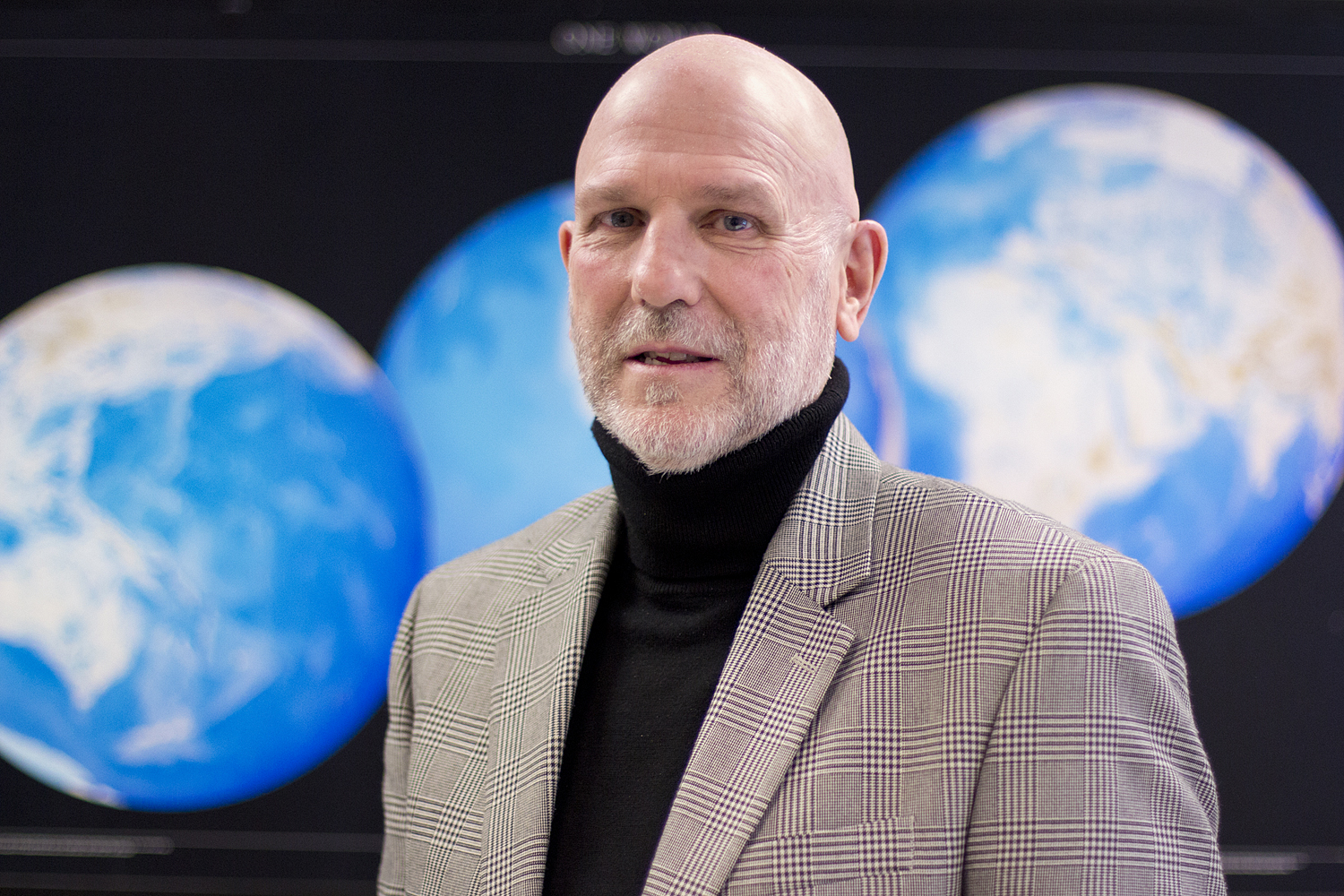When newly minted assistant professor Mike Willig arrived in the Luquillo mountains of Puerto Rico in summer 1982, he did what he’d always done: He went into the forest at dusk, spread a mist net between two poles, pulled out his field notebook, and waited for bats.
He was confident, based on years of graduate school experience from Brazil, that he’d catch dozens, or even a hundred.
Over the course of 10 hours, Willig captured just three bats. Determined, he went out the next night, and the next. For five weeks he spent nights in that forest, catching three or four bats nightly. When he finally had enough for his experiment – to observe the bats feeding on their favorite tropical fruit – the fruits had gone sour.
But a few nights into his foray, he noticed the forest was crawling with walking sticks. Each night, while waiting for the rare bat, Willig caught the stick insects, took their measurements, marked them, and let them go. The resulting publication documented how much the insects moved, what they ate, and how many there were. The next summer he returned, this time with eyes only for the walking sticks.
“I was a poster child of what it meant to be an ecologist at the time,” he says.
Ecologists, he says, generally focused on one abundant animal or plant, in one small area, for a short time period. But modern ecologists have learned that to understand how Earth’s life works, you have to think bigger, and longer-term.
“Ecologists finally realized that if you want to understand the plot of a movie, including the protagonist and the antagonist, and how it all unravels, you don’t restrict your attention to two frames of the movie,” he says. “The LTER program revolutionized that.”
The Long-Term Ecological Research Network (LTER) is a network of thousands of scientists and hundreds of research projects continuously funded by the National Science Foundation for 36 years. Willig, a participant at Luquillo for more than 30 years, is co-PI on a recent $3.9 million LTER grant to that project.
His experience inspired his new book, Long-Term Ecological Research: Changing the Nature of Scientists. The volume features scientists’ accounts of how participating in “big data” science has changed them as researchers, and as people.
The Rise of Long-Term Ecology
The National Science Foundation created LTER in 1980 by funding nine research projects for groups of scientists across the U.S. At research sites spanning the misty mountains of Oregon, the dry plains of Kansas, and the Great Lakes of Wisconsin, their charge was to understand a diverse array of ecosystems, over large areas, and over time; and to create a legacy for future generations to continue that work.
Today LTER has 25 sites across the continental U.S., Alaska, Puerto Rico, French Polynesia, and Antarctica, and boasts about 2,000 scientists.
The grants brought together researchers from disciplines today considered within environmental science. Geoscientists, chemists, molecular biologists, and even anthropologists teamed up with traditional field ecologists, and this collaboration, Willig says, was crucial. Environmental issues of the day, like acid rain and the first whisperings of climate change, couldn’t be addressed by ecologists alone.
In 1989, a year after the Luquillo Mountains became an LTER site, Hurricane Hugo hit the forest hard. It looked like a field of popsicle sticks, describes Willig, with trees’ leaves and entire branches stripped clean away. In the brown, desolate aftermath, Willig’s beloved walking sticks were nowhere to be found.
“It starts to challenge your view of how a system works if one of the most abundant organisms, a week after a disturbance, can’t even be found,” says Willig. “Is it extinct? Will it come back? Which view of nature is the most ‘accurate’?”
Fields like particle physics and structural biology, with their billions of data points generated from sophisticated machines, lend themselves to big data analyses. But in 1980, long before ecologists were sequencing DNA, they realized that all their complex data – like those contained in reams of waterproof paper filled with the size, shape, and movements of walking sticks – needed someplace to go.

“In the olden days, when you died, your data just went away,” says Willig. “A major shift in ecology has been to say: It’s not my data. It’s everybody’s data.”
Those data on walking sticks thus lived on alongside more modern measurements like GIS landscape information, remotely-sensed wind and weather patterns, and ultrasonic detectors.
At many sites, remotely-sensed data is uploaded automatically to LTER databases. Willig notes happily that ultrasonic detectors have revolutionized bat ecology, because they record continuously, and don’t require operation by humans.
“You put them up on a tree, and they have microphones that record all night long,” he explains. “You can use them for birds, frogs, bats, all kinds of things.”
The Nature of Scientists
Over time, Willig noticed that he, too, had changed. No longer the laser-focused organismal ecologist of his youth, he now studies large-scale issues like deforestation and forest dynamics.
Willig’s book, co-edited with Lawrence Walker of the University of Nevada-Las Vegas, contains personal essays and evaluations of the LTER program by scientists from most of its 25 sites. They conclude, perhaps unsurprisingly, that their careers and outlook on ecology were broadened by LTER.
In some cases, scientists specialize more, and draw more on a network of specialists in other areas – statistics, hydrodynamics, geology – to help them with different facets of their work. Others say they themselves have become more versatile, learning technical skills – like gene sequencing and chemistry – that they never thought they’d acquire.
Mark Boyer and Scott Brown, Board of Trustees Distinguished Professors of Geography and Educational Psychology respectively, contribute an analysis that concludes that LTER has indeed changed the field. They call the LTER movement an “invisible college,” whose only challenge will be to continue to recruit like-minded scientists for future innovation.
Willig thinks that’s likely. With research themes like coastal vulnerability, sea ice disappearance, and landscape modification under climate change, he predicts that LTER will continue to attract young environmental scientists. The ideas of change, and of leaving something behind for future generations, he says, are inherently human.
“Ecosystems are so fascinating because they’re constantly changing,” he says. “They’re always in a state of flux. Just like our lives.”



